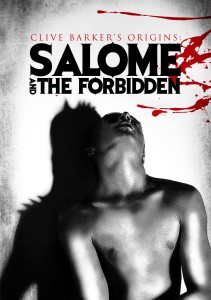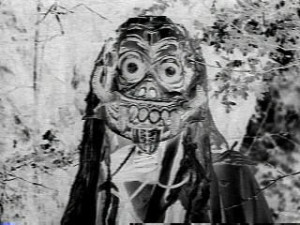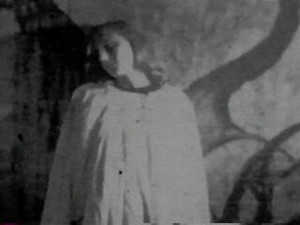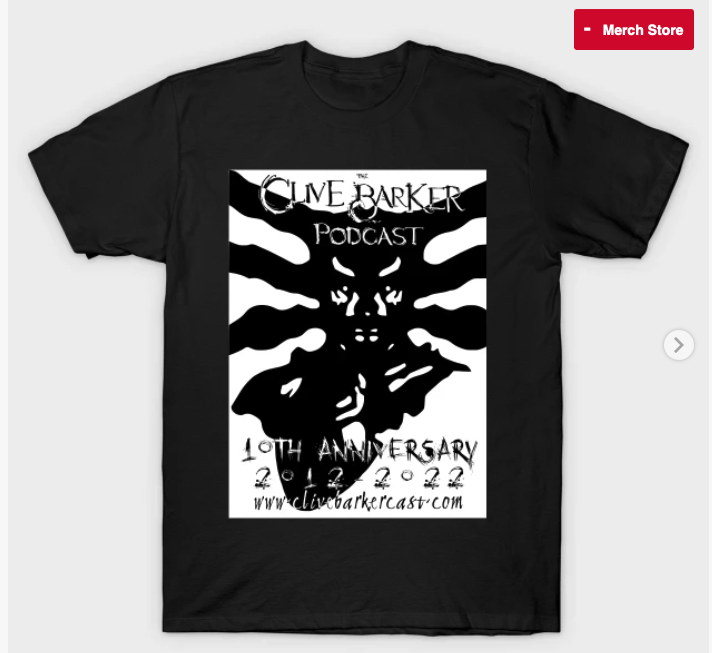Clive Barker’s Origins: Salomé and The Forbidden
Hello Friends:
This is a quick heads up to let you guys know that the new edition of Clive Barker’s early movies Salomé & The Forbidden was recently released on August 25th, and is now available on Amazon.com. This new release is titled “Clive Barker’s Origins – Salomé and The Forbidden”. Editorial review at Amazon says:
“In 1970s Liverpool, Clive Barker and a small group of friends from college made two short films. Salome (1973) and The Forbidden (1978) feature early footage of Barker, who also did most of the special effects, and Doug Bradley, who went on to fame as Pinhead in the Hellraiser films. Also included are interviews with Barker, Bradley and other key players. Contains graphic violence and nudity. Salome is an 18-minute version of the tale based on the Oscar Wilde play and The Forbidden is a 35-minute short.“
Click the image below, to go to the Amazon.com order page.

I had the previous release from Redemption Video and the Hellraiser I-III Anchor Bay’s Lament Configuration set (these shorts are in the bonus DVD), but hope to get this one as well soon. I don’t think there’s any new material on this release if you have the older one, but we’ll let you know once we get to review it. For now, I leave you with an old review of mine, that was kindly corrected by Pete Atkins himself, who is the main character in “The Forbidden”, back in 2006:
The short movie “The Forbidden”, filmed by Clive circa 1975-78, has echos in Hellraiser 10 years later…
The Forbidden is a Faustian tale of mystery and redemption, in which Peter Atkins plays a Faust character who meets a “Spirit in the Woods”, and probably strikes a bargain for power and physical pleasures, as portrayed by his love scene with Lynne Darnell. It was finally assembled in its definitive version in 1998 (it was incomplete for over 20 years) under Clive’s supervision. The film also features a strikingly ingenious technique: after being shot on 16mm film, it was printed in negative, to give it an aura of heightened reality, or super-reality. Objects and people were painted in negative so they would look on film, as a fake positive.
In this black and white short (with no dialogue), Doug Bradley appears in the opening scene as some sort of demon creature wearing a black mask in the first few seconds. Clive Barker plays another demon, doing a nude (and erect!) ‘Possession Dance’. One of the main encoded symbols in this short is a mysterious diagram that is first shred to pieces, but later reassembled. The main character is played by Peter Atkins, who would become the script writer for Hellraiser 2-4 and Wishmaster, and comes to a gruesome fate at the hands of angels.
Clive described the skinning scene as “a wonderful and sublime moment of unveiling“. It was done by painting successive layers of wet paint over his body, and then peeling them back after it dried. The Angels first tattoo, then skin the Faust character, who becomes a living version of one of Andreas Vesalius anatomy etchings in “De Humani Corporis Fabrica“. I encourage you to find out more about this surgeon and anatomist’s work. I had the privilege of seeing some first editions of his etchings in the Gutenberg Museum in Mainz, Germany, and it is a visually compelling work and in some plates, unexpectedly witty.
There is also a “nail-board” with 6-inch nails banged into it. It plays an important role in the summoning of a spirit, while beams of light play around these nails. Here are the first few hints of a kind of imagery that would later be perfected and fleshed out in Hellraiser: The Faustian bargaining, the birds flying against the window remind us in retrospective of ‘vast blackbirds in perpetual tempest‘ or the flock of birds’ sound effect that accompanied the Derelict in Hellraiser as well as the skinless man imagery, the cenobites/angels who love Faust, then and skin him as he apparently feels no pain and finally the nail-board, which would a decade later transpose the nails onto a human face.
Salomé (1973), was shot in Super 8 at a florist’s shop basement in Liverpool. It features Phil Rimmer as John the Baptist, Doug Bradley as King Herod, and Anne Taylor as the beautiful and enticing Salomé. Along with Clive Barker as a living candlestick, Graham Bickley, Julie Blake and Lynne Darnell, it is based on Oscar Wilde’s play of Salome. In fact they did it as the Dog Company for several times before shooting it in Super8. On the boards, Doug Bradley played a blind John the Baptist (first attempt at special FX by Clive, using papier-maché and painting over it).
From Peter Atkins himself in conversation with me in 2006: “SALOME predates my involvement with Dog Company, by the way. I first met everyone a year later in 1974 when I was a mere slip of a lad of 18 and they were a bunch of old farts. Clive and Phil, for example, were already 21. Practically middle-aged.”
It is a black and white silent film, with a minimalist score, very moody, lots of deep shadows and striking images. Salomé’s dance is in my opinion one of the most beautiful moments of the film. It has a very decadent feel about it, as it depicts the lustful court of Herod. To disguise the fact that this was shot in a basement, they taped wallpaper backwards to the wall and painted designs on it. The lighting relies a lot on ‘chiaroscuro’ effect to disguise the fact that there was no depth—paraphrasing from what Peter Atkins once told me.
These shorts were originally released in VHS and DVD from Redemption Video – “Clive Barker’s Salomé & The Forbidden” (1998) and subsequently in the Anchor Bay edition (Region 2) of Hellraiser I-III + bonus DVD (2004). Now you can get them as Clive Barker’s Origins: Salomé and The Forbidden.






























[…] […]